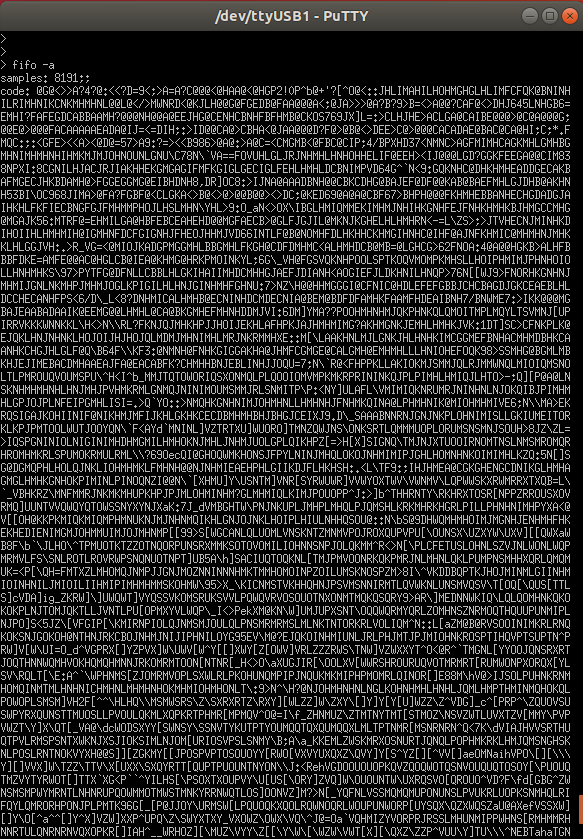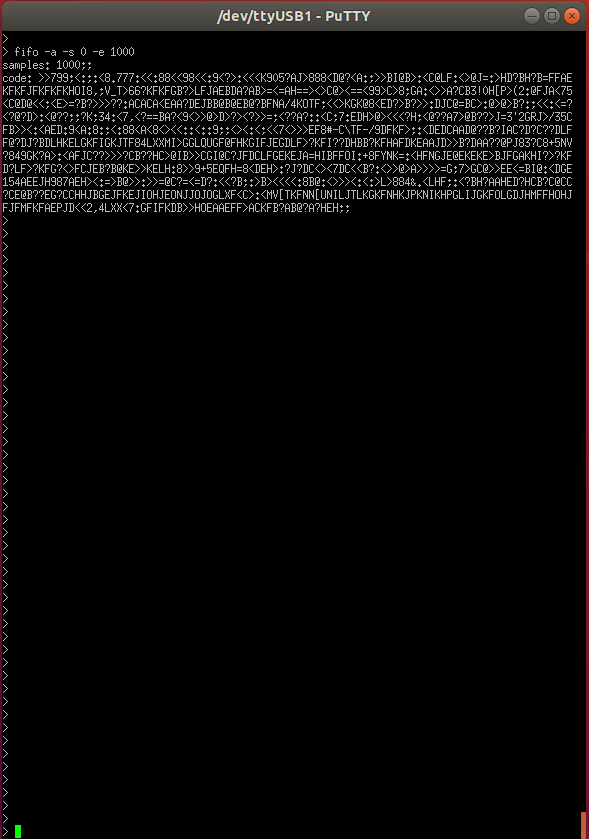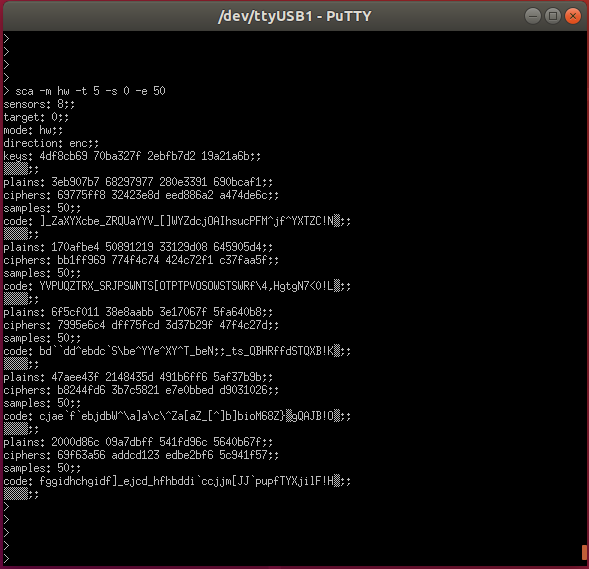#3 - Use SCAbox#
Goals#
This tutorial exposes the power leakage acquisition configurations available in the demonstration. We use the project built in Tuto #2 to conduct the acquistions.
This tutorial will help you in performing acquisition with a serial command:
Simple acquisition
Cropped acquisition
Crypto-algorithm acquisition
Iterated acquisition
Note
To denote the value given to an option we will always use the letter designing the option. eg.
-swill be \(s\)If you want to learn more about the commands available in the demo you can displayed the help by typing
man
Tutorial#
The tutorial starts here !
1. Simple acquisition#
A simple acquisition consists in acquiring the sensor state and storing it into the storage FIFO. The hardware repeats this operation until the FIFO is full.
The latter is then read by the C program and the acquired values are exported through UART.
To perform a simple acquisition type the following command:
> fifo -a
If the command executed successfully you should have an output similar to the one below in your serial terminal:

If you want the sensor output to be printed in number instead of char code use the option verbose
-v:
> fifo -a -v
Note
This command prints all the FIFO content. The default SCAbox FIFO depth is 8192.
Note
With sensors running at 200 MHz, we can monitor the leakage for a duration of 40µs. You can increase the FIFO depth and reduce the sensor sampling frequency to increase the acquisition duration.
2. Cropped acquisition#
A cropped acquisition is a simple acquisition where the data is cropped at its start and end. The resulting data will contain \(e - s\) samples excluding the e-th one.
To perform a cropped acquisition type the following command
> fifo -a -s [start] -e [end]
If the command executed successfully you should have an output similar to bellow in your terminal emulator :

3. Crypto-algorithm acquisition#
A crypto-algorithm acquisition consists in acquiring the sensor state during a cryptographic computation and storing these values into the FIFO. The FIFO is then read by the demo and the acquired values are sent via UART.
To acquire a simple run of crypto-algorithm for instance a simple AES encryption.
> aes -m [mode] -d [data] -k [key]
In this demo, the mode argument can be either:
hwfor VHDL hardware AEStinyfor C tiny AESsslfor C OpenSSL AESdhuertasfor C dhuertas AES
The data argument is the plaintext in hexadecimal. The key argument is the secret key in hexadecimal.
For instance, type the following command:
> aes -m hw -d 00112233445566778899aabbccddeeff -k 000102030405060708090a0b0c0d0e0f
If the command executed successfully you should have an output similar to bellow in your terminal emulator :

Note that no sensor value is displayed but the FIFO has effectively been filled. To retrieve the acquired values, you must read the FIFO :
> fifo

Note
As you can see in the above picture, some Ascii caracters cannot be displayed properly using the PuTTY interface. However, they will be correctly saved in a log file.
You can perform a cropped acquisition of crypto-algorithm:
> aes -m [mode] -d [data] -k [key] -e [end]
This way the hardware will stop to fill the FIFO once \(e\) values are acquired. You can similarly retrieve the acquired values :
> fifo [-v] -s [start] -e [end]
4. Iterated acquisition#
In order to perform multiple crypto-algorithms runs and capture their leakage, the demo provide a simple command that will iterate the crypto-algorithm acquisition :
> sca -m [mode] -t [iterations] -s [start] -e [end] [-v]
This command will run cryptographic computation using random data and read the FIFO at once. This process is repeated \(t\) times.
If the command executed correctly you should see the following output :

Conclusion#
In this tutorial you learned how to launch sensor’s power leakage acquisition during a cryptographic encryption. You learned how to iterate this acquisition and how to crop the power leakage.
Keep in mind that the SCA automation python tool presented in Tuto #1 provides a powerful way to capture leakage and transmit it via UART using our protocol. It allows to capture enough traces, that can be crop to diminish acquisition time, in order to perform a successful attack.